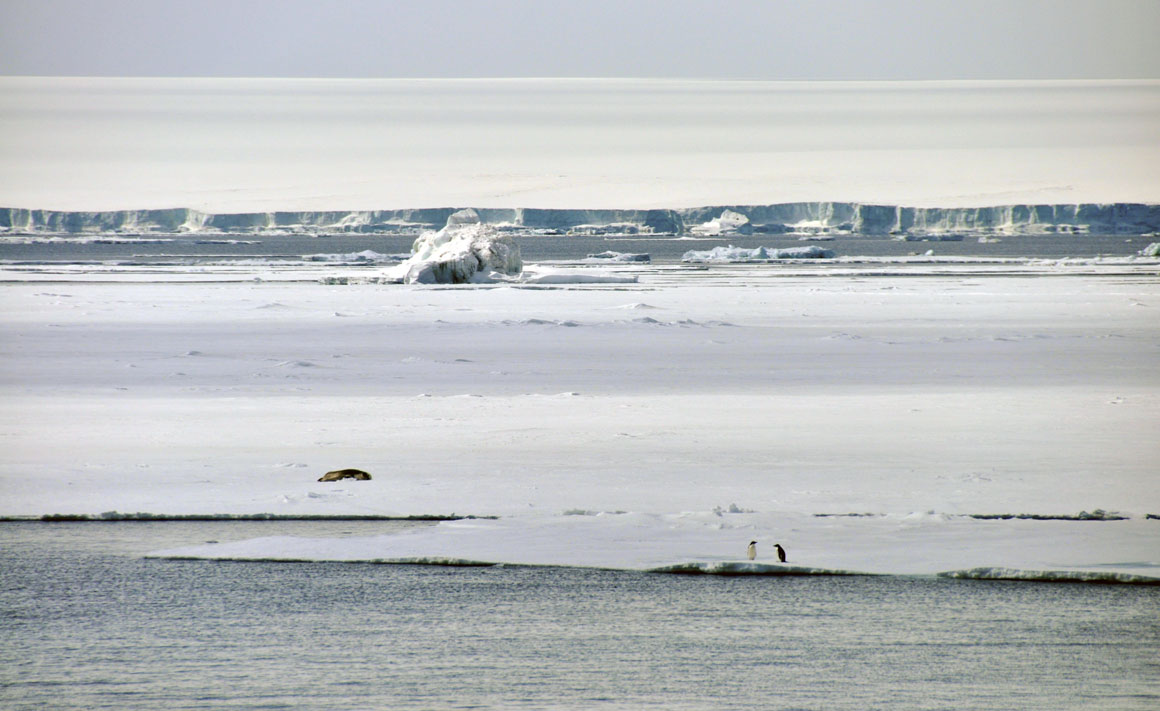 Monday 3 February 2014 1:18pm
Monday 3 February 2014 1:18pmClimate change is one of the greatest scientific and social challenges facing the world today.
While politicians struggle with unpopular questions about what to do to reduce humankind's influence on global warming, scientists are working to build a better understanding of the mechanisms of change.
From the Antarctic to the Arctic, Otago researchers are at the forefront of several influential investigations that should help inform future decision-making across the globe.
Polar regions have long been likened to the canary in the coalmine, giving early warning of problems to come and Antarctic research is particularly relevant because of the huge amount of ice locked up on the continent.
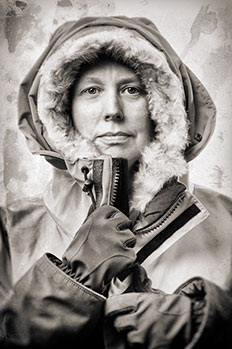
Professor Christina Hulbe
Professor Christina Hulbe (Surveying) is investigating the speed of ice streams flowing into Antarctica's Ross Sea and trying to work out how vulnerable the Ross Ice Shelf is to a warming climate.
“Paleoclimate records from coastal environments and sediments on the sea floor show what happened historically. The last few times carbon dioxide levels were as high as they are today, sea levels were several metres higher than they are today.
“We know that with climate change, sea-level rise will come from Greenland and Antarctica. In the south, we expect it will be mainly from the West Antarctic Ice Sheet.
“What we don't know is how fast the change will happen. Is it likely to be fast or slow? Will it be uniform or episodic?”
These questions are challenging because many processes are not well understood, partly because of the continent's remoteness and limited data.
Hulbe has been monitoring two Antarctic ice streams that are far enough north to have relatively long records – going back to the 1980s.
“For every time scale we look at, we find the western Antarctic ice streams are changing, sometimes due to external causes and sometimes due to internal processes. The internal variability goes in fits and starts, speeding up and slowing down again, even stagnating and reactivating.”
One of the influencing factors appears to be flow instability in the materials between the ice and the bedrock. The water and sediment that assist the ice to move quickly toward the sea are distributed in thin films that have complicated behaviour.
More research is needed, says Hulbe, but “the indicators are that we are on the right track. We know what we should be studying, but one of the challenges of working in polar environments is the short summer season for fieldwork. There may be pressure to draw profound conclusions, but scientists have to be careful not to do that without sufficient data.”
Hulbe's research has also shown that the edges of the ice streams are shifting.
“That's interesting because we have evidence of events like this on other ice streams” in the last few hundred years. To the south, margin jumps preceded stagnation.
“If an ice stream stops flowing, that will reduce the rate of sea-level rise, but it'll speed up again in the future.
“Any study about how and why this happens will allow us to build better models for the future.”
Hulbe is also leading a multi-institutional study aimed at understanding how warming will affect the Ross Ice Shelf.
“We know the ocean and atmosphere are warming up, and we need to understand how the ice sheet is going to respond to that warming.
“We want to be able to tell people what the likely rates of change are. In general it's about not just the ocean or just the ice, but about how all the various processes interact and fit together. The scientific community has to all work on this together.”
An international team led by Professor Pat Langhorne (Physics) has just completed a health check on part of Antarctica's Ross Ice Shelf – and found the ice there appears to have been stable for a century.
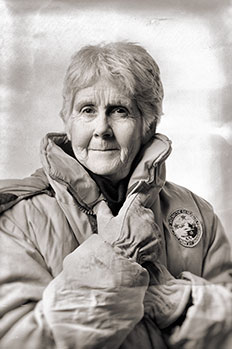
Professor Pat Langhorne
It's holding firm despite many parts of Antarctica showing loss of mass from ice shelves.
The shelves are formed when accumulated snow on the continent is compressed into ice and flows down to the sea, where it floats on the ocean. The resulting ice shelves could be a kilometre deep, with vast ocean cavities beneath them.
“The behaviour of those cavities is mysterious and we are working on trying to understand that. It's difficult because they are very inaccessible parts of the ocean,” says Langhorne.
Each winter, the surrounding ocean freezes to sea ice, ejecting cold and dense salty water that sinks beneath the ice shelves and into the cavities.
If temperatures are low enough, supercooled water from the cavities may flow into the surrounding ocean and promote the formation of more sea ice. The white surface of the sea ice reflects energy from the sun and protects the ocean from the warming that threatens ice shelves.
“Ice shelves collapse for all kinds of reasons, including changes in ocean currents that are linked to changes in sea ice.
“Where the ocean is warmer and sea ice is less concentrated than in the past, there is a better chance of warmer water getting into cavities and melting the ice shelf from underneath. That's the dominant means of loss of mass in Antarctica.
“But the Ross Ice Shelf seems to be minimally affected at the moment and we don't see any evidence that the supercooled water from beneath the ice shelf has changed dramatically over the last 100 years.”
“It's good news, but we have to temper that because it's only one tiny pinprick of data around a very big continent.”
Langhorne's team collated data going back to records from 1902 and 1911, combining these with more recent measurements from the 1960s to today.
They have now been able to establish an Antarctic-wide baseline for melt-refreeze processes at the bases of the continent's ice shelves so that future change may be measured.
Professor Vernon Squire (Deputy Vice-Chancellor, Academic) and colleagues around the world are investigating how sea ice is affected by wave action in both the Arctic and the Antarctic.
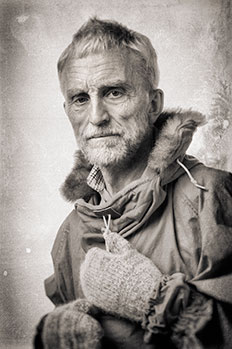
Professor Vernon Squire
The focus is on how to include the consequences of interactions between ocean waves and sea ice in global climate models, and how to assimilate sea ice properly in operational worldwide wave forecasting.
Forecast models such as Wavewatch III are important for ships engaged in fisheries, tourism and geophysical or hydrographical prospecting, and for Arctic offshore enterprises allied to hydrocarbon exploration or military-related movements.
Over 30 years of data from satellites recording the polar regions demonstrate categorically that Earth's frozen oceans are evolving.
The Arctic has experienced more than a 55 per cent decrease in the extent of summer sea ice and there have been reductions in thickness, too.
“Higher temperatures have caused runaway sea-ice melting by increasing the amount of heat absorbed and triggering extra melting because more open water is around – the so-called ice-albedo feedback.”
Records from the world's oceans over the same period show increasing wind speeds, leading to an increased frequency of higher and longer ocean waves, which also affect ice cover.
The Arctic, an ocean surrounded by land, is different from the Antarctic, a continent surrounded by ocean.
“The Southern Ocean has experienced a modest increase in maximum winter sea-ice extent, with accompanying adjustments to its spatial distribution around Antarctica.
“There, waves encourage freezing. Open water between broken-up ice floes quickly freezes over so, putting aside other differences between the polar oceans such as their depths, it is reasonable that the Arctic and Antarctic sea-ice covers will behave quite differently.
“The observed discrepancy arises because of fundamental differences between the two polar oceans that include imbalances in the severity and tenacity of regional oceanic and meteorological processes,” says Squire. Compelling evidence suggests that global climate change is responsible.
He is part of two major collaborative programmes working on improving operational forecasting for the polar seas.
One, supported by the US Office of Naval Research, involves scientists in the USA, Europe, Canada, Australia, and at the University of Otago. The second is supported by the EU and includes colleagues in Norway and Russia.
“Vital forecasts to support activities in the polar seas are currently unsatisfactory,” says Squire, “because they neglect a fundamental physical process that affects the sea ice considerably.”
Dr Nicolas Cullen (Geography) is investigating how glaciers and ice sheets are responding to global climate change, with research in New Zealand, Africa and Greenland.
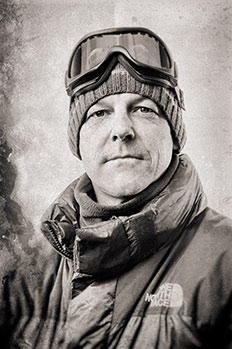
Dr Nicolas Cullen
Although his main focus is now gathering high quality observational data about changes to Brewster Glacier in the Southern Alps, international collaboration allows him to continue previous research on Mount Kilimanjaro and the Greenland Ice Sheet.
At all three locations the knowledge gained should improve our understanding of past, present and future climate.
While trying to understand the processes behind receding glaciers on Africa's highest mountain, Cullen worked on developing an energy/mass balance model to resolve interactions between the glacier surface and the atmosphere.
Using data from a weather station near the top of Kilimanjaro, the model is easily transferable to other locations.
Cullen spent several seasons doing fieldwork at Summit, the multidisciplinary base on top of the Greenland Ice Sheet.
It's similar to Antarctica's South Pole station in its scientific work, and is home to several year-round investigations and seasonal campaigns that take advantage of its unique location.
Cullen and colleagues in America, Switzerland, Austria and Germany believe that the future of the Greenland Ice Sheet could hang in the balance.
“In the early '90s there was general agreement that the ice sheet was in mass balance, neither growing nor shrinking, but in the early 2000s that perception changed. Observational evidence showed that Greenland had begun to respond to climate change and contribute to sea-level rise.
“Surface melting induces an acceleration of the flow of Greenland's marginal ice, with melt water lubricating the bed of the ice streams.”
While dynamic acceleration and thinning is important, says Cullen, it is likely that the surface mass balance – not discharge – is the primary driver of loss of Greenland Ice Sheet mass over recent decades and greater time scales.
“It is, therefore, critical that we understand the atmospheric controls on all energy and mass exchanges over the ice sheet.
“Greenland contains one of the last legitimate dry-snow zones in the Northern Hemisphere and melting generally does not occur, yet we have recorded a few days in recent years when almost the entire ice sheet reached melting point.”
“We're used to melting at sea level, but not at altitude, so it was a bit of a wake-up call for all of us interested in the climate on the top of the Greenland Ice Sheet.”
The Greenland Ice Sheet tends to regulate its own climate, but reducing its ability to reflect the sun's warming rays could change the process and eat away at the mass.
“Melting changes the properties of snow itself. If you have more melting you lower the reflectivity of the ice sheet, resulting in further energy being available for processes responsible for removing mass.
“The Greenland Ice Sheet is going to be a big player when it comes to sea-level rise in the future.”
Dr Chris Moy (Geology) is hoping that messages from the past written in dust will help the world understand the present.
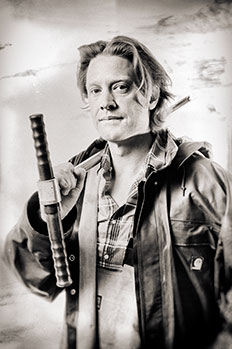
Dr Chris Moy
Atmospheric dust feeds the food chain in the ocean and alters Earth's radiation budget, which is how much energy the planet gets from the sun and how much it radiates back into space.
“Dust is an important driver of global climate change, but there are very few well-dated and highly-resolved records of dust deposition that can be used to examine the influence on the global carbon cycle over millennial timescales,” says Moy.
He and collaborators in America and Europe are researching across the world to collate records of past dust depositions and the effects they have had on climate over the last 15,000 years.
Middleton Island in the Gulf of Alaska has proven to be a hot spot for dust research. It sits on the edge of the continental shelf, with shallow, micronutrient-rich water on the landward side, and deep, micronutrient-poor water out towards the sub-polar North Pacific.
“It's a tiny island only two kilometres by 12, lying to the southwest of Alaska's Copper River delta, where very large dust plumes form in the right conditions. It's a fantastic spot for research.”
Dust plumes flourish in the autumn when the braided rivers are low and fine-grained silt and clay ground up by glaciers – glacial flour – is exposed along the deltas.
When high-pressure weather systems inland combine with low pressures offshore, extreme winds pick up the dust and disperse it hundreds of kilometres out to sea, where it seeds the ocean with micronutrients such as iron, which algae need to thrive.
“There's plenty of primary production in rich coastal waters and protected fjords, but an absence of it further out to sea until the dust storms blow. Glacial flour contains a lot of iron in a form that is bioavailable to algae, which are the base of the food chain.”
Peat coring on Middleton Island helps reveal a history of dust storms and depositions, indicating past climate and productivity.
“By looking at the past and comparing it with the present, we get a better understanding of longer time scales. We've already seen an increase in dust deposits over the last thousand years, and a concentration of elements such as aluminium and titanium, which are only deposited in these peatlands by atmospheric processes.”
“Elevated concentrations are driven by glacial dust storms, which have increased because of climate change affecting the ice extent in the last 5,000 years.”
Moy's worldwide collaborators include scientists from US Geological Survey offices in Woods Hole and Seattle, the Lamont-Doherty Earth Observatory at Columbia University and the Swiss Federal Institute of Technology (ETH Zürich).
He is also doing similar historical climate research in the South American Andes, on New Zealand's mainland and fjords, and on the sub-Antarctic islands.
“A lot of Southern Hemisphere work involves trying to understand climate variations linked with westerly wind patterns and the Southern Ocean circumpolar flow and how they have changed over time.
“The overall aim is to develop paleoclimate records that have both regional and global significance.”
COLLABORATION and FUNDING
Professor Christina Hulbe:
- New Zealand Antarctic Research Institute
Professor Pat Langhorne:
- National Institute of Water and Atmospheric Research
- Callaghan Innovation
- Canterbury University
- University of Alaska, Fairbanks, USA
- York University, Canada
- Antarctica New Zealand
- Marsden Fund
- Foundation for Research, Science and Technology
- Ministry of Business, Innovation and Employment
Professor Vernon Squire:
- US Office of Naval Research Departmental Research Initiative “Sea State and Boundary Layer Physics of the Emerging Arctic Ocean”
- European Union FP7 Grant “SWARP: Ships and Waves Reaching Polar Regions”
Dr Nicolas Cullen:
- National Science Foundation Office of Polar Programs
Dr Chris Moy:
- US Geological Survey Mendenhall Program
- New Zealand Antarctic Research Institute
- Marsden Fund
- University of Otago